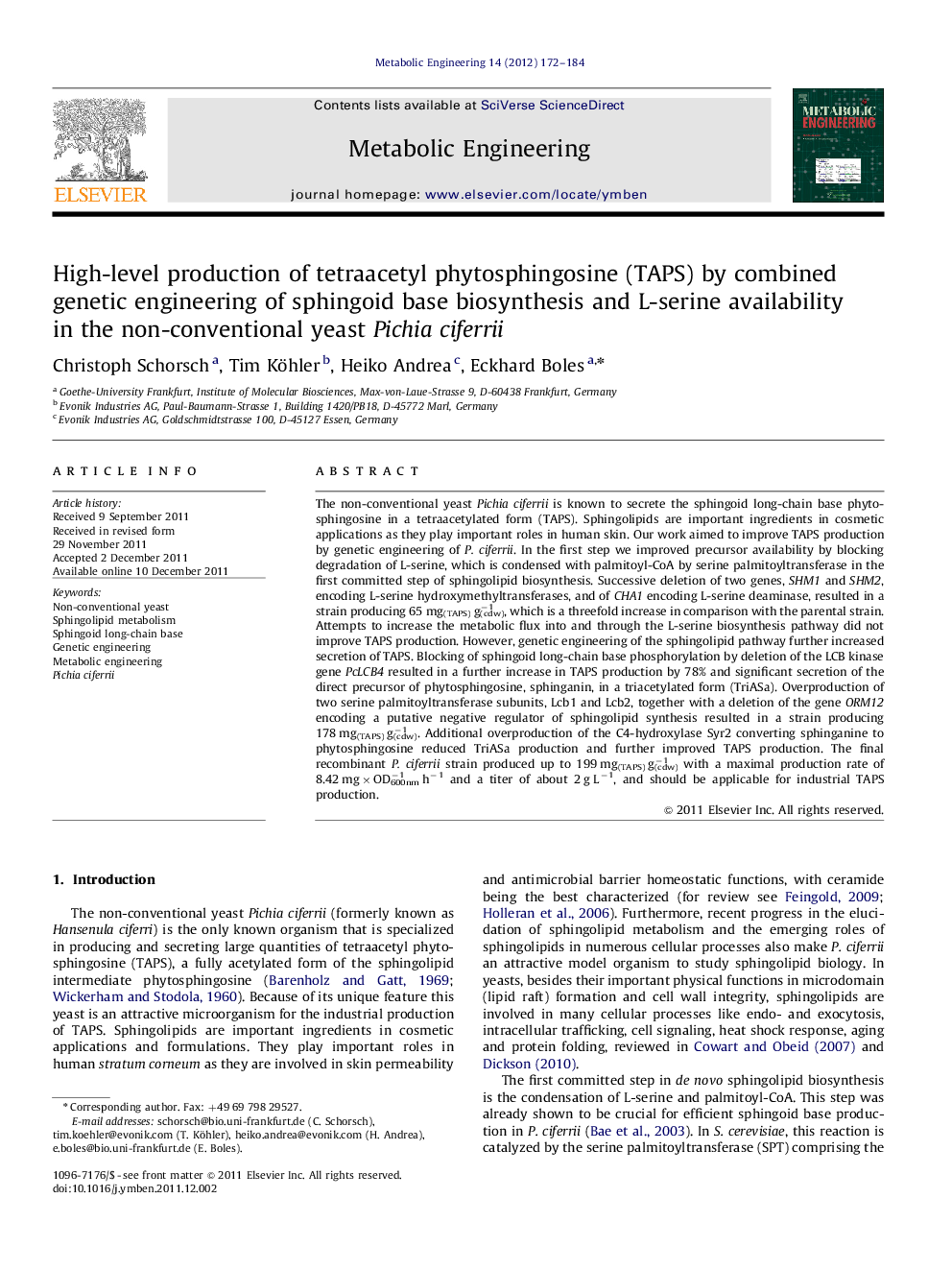| کد مقاله | کد نشریه | سال انتشار | مقاله انگلیسی | نسخه تمام متن |
|---|---|---|---|---|
| 31586 | 44821 | 2012 | 13 صفحه PDF | دانلود رایگان |

The non-conventional yeast Pichia ciferrii is known to secrete the sphingoid long-chain base phytosphingosine in a tetraacetylated form (TAPS). Sphingolipids are important ingredients in cosmetic applications as they play important roles in human skin. Our work aimed to improve TAPS production by genetic engineering of P. ciferrii. In the first step we improved precursor availability by blocking degradation of L-serine, which is condensed with palmitoyl-CoA by serine palmitoyltransferase in the first committed step of sphingolipid biosynthesis. Successive deletion of two genes, SHM1 and SHM2, encoding L-serine hydroxymethyltransferases, and of CHA1 encoding L-serine deaminase, resulted in a strain producing 65 mg(TAPS) g−1(cdw), which is a threefold increase in comparison with the parental strain. Attempts to increase the metabolic flux into and through the L-serine biosynthesis pathway did not improve TAPS production. However, genetic engineering of the sphingolipid pathway further increased secretion of TAPS. Blocking of sphingoid long-chain base phosphorylation by deletion of the LCB kinase gene PcLCB4 resulted in a further increase in TAPS production by 78% and significant secretion of the direct precursor of phytosphingosine, sphinganin, in a triacetylated form (TriASa). Overproduction of two serine palmitoyltransferase subunits, Lcb1 and Lcb2, together with a deletion of the gene ORM12 encoding a putative negative regulator of sphingolipid synthesis resulted in a strain producing 178 mg(TAPS) g−1(cdw). Additional overproduction of the C4-hydroxylase Syr2 converting sphinganine to phytosphingosine reduced TriASa production and further improved TAPS production. The final recombinant P. ciferrii strain produced up to 199 mg(TAPS) g−1(cdw) with a maximal production rate of 8.42 mg×OD600nm−1 h−1 and a titer of about 2 g L−1, and should be applicable for industrial TAPS production.
Research highlights
► A Pichia ciferrii strain for high level production of tetraacetyl phytosphingosine (TAPS) has been constructed.
► Key steps in the TAPS production pathway have been investigated.
► Serine degradation has been blocked to increase TAPS production.
► Genetic engineering of the sphingolipid pathway has been performed.
Journal: Metabolic Engineering - Volume 14, Issue 2, March 2012, Pages 172–184